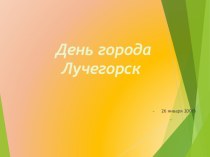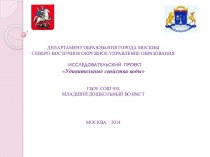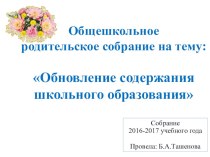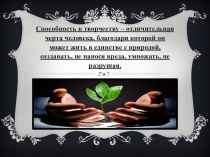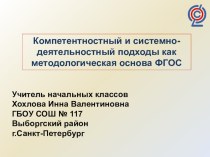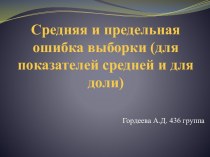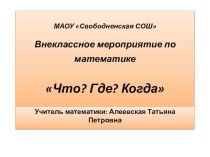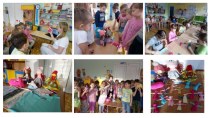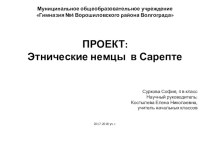- Главная
- Разное
- Бизнес и предпринимательство
- Образование
- Развлечения
- Государство
- Спорт
- Графика
- Культурология
- Еда и кулинария
- Лингвистика
- Религиоведение
- Черчение
- Физкультура
- ИЗО
- Психология
- Социология
- Английский язык
- Астрономия
- Алгебра
- Биология
- География
- Геометрия
- Детские презентации
- Информатика
- История
- Литература
- Маркетинг
- Математика
- Медицина
- Менеджмент
- Музыка
- МХК
- Немецкий язык
- ОБЖ
- Обществознание
- Окружающий мир
- Педагогика
- Русский язык
- Технология
- Физика
- Философия
- Химия
- Шаблоны, картинки для презентаций
- Экология
- Экономика
- Юриспруденция
Что такое findslide.org?
FindSlide.org - это сайт презентаций, докладов, шаблонов в формате PowerPoint.
Обратная связь
Email: Нажмите что бы посмотреть
Презентация на тему Theme : lesson
Содержание
- 2. Plan Definition of a lessonStructure of a lessonStages of a lessonPrinciples of a lesson
- 3. A lesson is a structured period of
- 4. Structure of a lesson divide into
- 5. The type of lesson is usually specified
- 6. Non- traditional forms
- 7. lesson has five stages:PreparationPresentationPracticeEvaluationExpansion
- 8. 1. Preparation Use discussion or homework review
- 9. 4. EvaluationWhen all students have completed the
- 10. There are 3 things which influence the success of the lesson: motivationorganizationstudents’ capacity (ability)
- 11. There are four major principles behind good
- 12. Скачать презентацию
- 13. Похожие презентации
Plan Definition of a lessonStructure of a lessonStages of a lessonPrinciples of a lesson












Слайд 3 A lesson is a structured period of time
where learning is intended to occur. It involves one or more students
being taught by a teacher or instructor. A lesson may be either one section of a textbook or, more frequently, a short period of time during which learners are taught about a particular subject or taught how to perform a particular activity. Lessons are generally taught in a classroom but may instead take place in a situated learning environment. In a wider sense, a lesson is an insight gained by a learner into previously unfamiliar subject-matter. Such a lesson can be either planned or accidental, enjoyable or painful.Слайд 4 Structure of a lesson divide into Traditional and
Non-traditional lessons.
Traditional types of lesson
1.Lessons of communication of
new knowledge2.Combined lessons
3.Lessons of fixation of knowledge and of developing skills and abilities
4.Lessons of systematization and revision of knowledge
5.Lessons of verification and control of knowledge.
Non-traditional types of lesson
role-play,
debate,
excursion
video
round table
discussion
Quiz
Conference, etc.
Слайд 5 The type of lesson is usually specified in
the introductory part of a lesson plan. Lessons of communication
of new knowledgeFEATURES
-this type occurs in senior forms;
-the information must be accessible
;-the teacher should interweave the communication of knowledge with questions addressed to the class;
STAGES
Warmer
1.Checking of previous knowledge
2.Formulation of the subject
3.Communication of knowledge ( presentation)
Teacher’s exposition
Partial Fixation
Exposition
Partial Fixation
Model reading
4.Fixation of knowledge (practice and production)
5.Homework
Traditional types of lesson
Слайд 6 Non- traditional forms of
the lessons attract the attention of the pupils, raise
their interest in learning English and as a result they motivate their better adoption of the material learnt. For example role-play. Role-playing exercises teach skills that are often assumed to be learned outside of the classroom (and sometimes aren't), and how to use those skills to complement scientific knowledge. These exercises require the students to use imagination, background knowledge appropriate to the character being role-played, and communications skills. Advantages : Introduces problem situation dramatically; Provides opportunity for students to assume roles of others and thus appreciate another point of view; Allows for exploration of solutions; Provides opportunity to practice skills. Disadvantages : Some students may be too self-conscious; Not appropriate for large groups;Some students may feel threatened .
Слайд 8
1. Preparation
Use discussion or homework review to
elicit knowledge related to the grammar and language use
points to be coveredUse comparison with the native language to elicit strategies that students may already be using
Use discussion of what students do and/or like to do to elicit their knowledge of the topic they will address in communication activities
2. Presentation/Modeling
Presentation provides the language input that gives students the foundation for their knowledge of the language. Input comes from the instructor and from course textbooks. Language textbooks designed for students in U.S. universities usually provide input only in the form of examples; explanations and instructions are written in English. To increase the amount of input that students receive in the target language, instructors should use it as much as possible for all classroom communication purposes.
3. Practice
In this part of the lesson, the focus shifts from the instructor as presenter to the students as completers of a designated task. Students work in pairs or small groups on a topic-based task with a specific outcome. Completion of the task may require the bridging of an information gap.
Слайд 9
4. Evaluation
When all students have completed the communication
practice task, reconvene the class as a group to
recap the lesson.Evaluation is useful for four reasons:
It reinforces the material that was presented earlier in the lesson
It provides an opportunity for students to raise questions of usage and style
It enables the instructor to monitor individual student comprehension and learning
It provides closure to the lesson
5. Expansion
Expansion activities allow students to apply the knowledge they have gained in the classroom to situations outside it. Expansion activities include out-of-class observation assignments, in which the instructor asks students to find examples of something or to use a strategy and then report back.
Слайд 10 There are 3 things which influence the success
of the lesson:
motivation
organization
students’ capacity (ability)
Слайд 11 There are four major principles behind good lesson
. They are variety, flexibility, learnability, and linkage.
Variety means planning
a number of different types of activities and where possible introducing students to a wide selection of materials so that learning is always interesting, motivatingand never monotonous for the students.
Flexibility means planning to use a number of different methods and techniques rather than being a slave to one methodology. This will make teaching and learning more effective and more efficient.
Learnability means the contents and tasks planned for the lesson should be within the learning capability of the students. Of course, things should not be too easy either. Doing things that are beyond or below the students? coping ability will diminish their motivation (Schumann, 1999).
Linkage means the stages and the steps within each stage are planned in such a way that they are somehow linked with one another. Language learning needs recycling and reinforcement.

